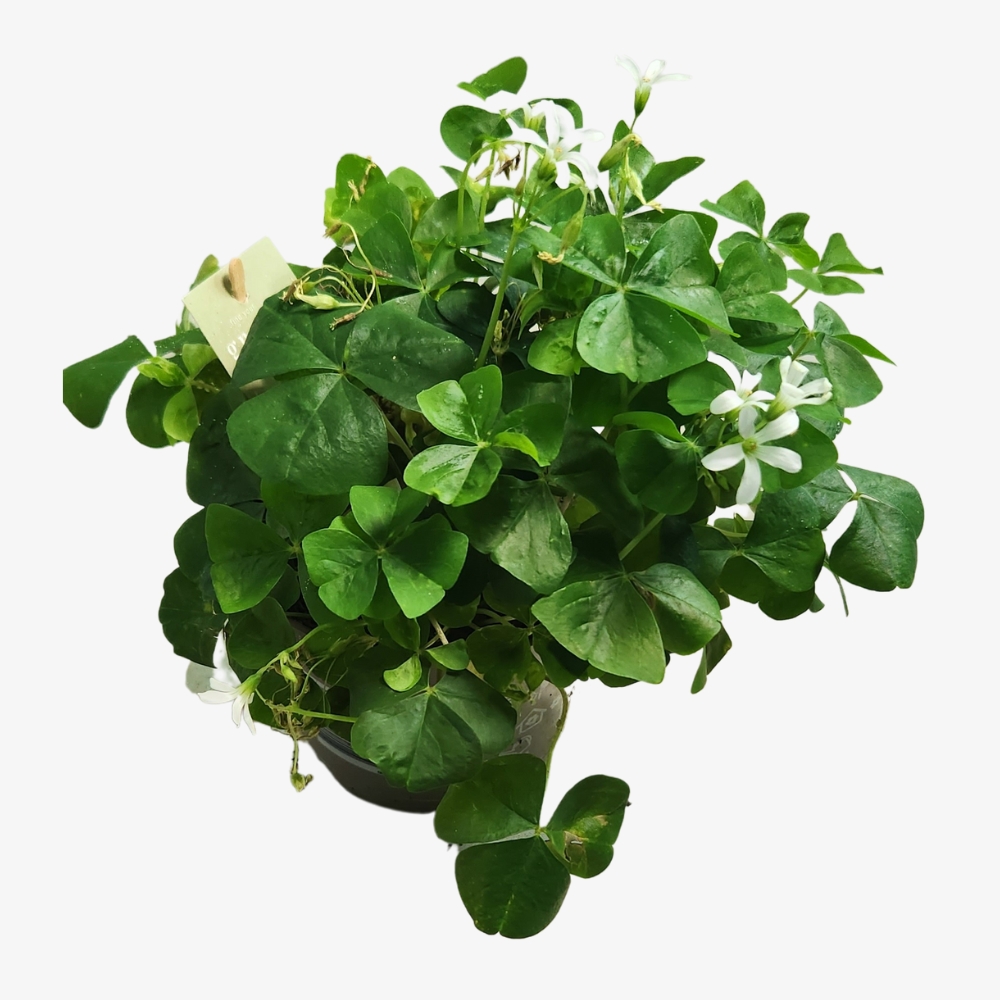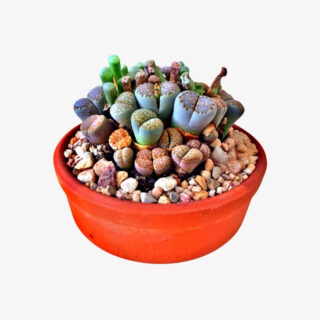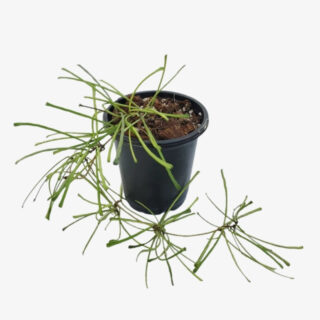We ship nationwide. Free standard shipping on orders over AED 150.
Green Oxalis
![]() Sorry, this item is sold out
Sorry, this item is sold out
63 AED Ex VAT
The Delivered Plant May Differ in Size, Color, Number of Flowers, Branches, and Will Come in a Plastic Pot, not The One Shown in The Picture.
PLANT CARE (Green GREEN OXALIS )
 |
The Green Oxalis plant prefers a temperature range between 60°F (15.5°C) and 75°F (24°C) |
 |
The green oxalis prefers bright, indirect sunlight. It can tolerate some direct sunlight, but too much direct sunlight can scorch its leaves. |
 |
This plant prefers moderate-to-high humidity levels. It can tolerate normal household humidity levels but will benefit from increased humidity. |
 |
This plant prefers to be kept evenly moist but not waterlogged. Watering the plant regularly is essential to keep it from sitting in water or becoming too dry. |
HOW TO GROW GREEN OXALIS
Here are the general steps to grow a green oxalis plant:
- Choose a suitable container. Select a container with drainage holes slightly larger than the plant’s root ball.
- Choose the suitable soil: Use a well-draining soil mix, such as peat-based potting.
- Planting: Place the plant in the center of the pot and fill in around the root ball with soil, leaving about an inch of space at the top of the pot.
- Watering: Water the plant thoroughly, ensuring the soil is evenly moist but not waterlogged.
- Lighting: Place the plant in a location that receives bright, indirect light for several hours daily. Avoid exposing the plant to too much direct sunlight, which can scorch its leaves.
- Humidity: Maintain moderate to high humidity levels around the plant. You can increase humidity by placing a humidifier nearby or misting the plant with water once or twice a week.
- Fertilizing: Fertilize the plant monthly during the growing season with a balanced, water-soluble fertilizer.
- Pruning: Prune the plant as needed to remove dead or damaged leaves and shape the plant.
- Propagation: The Green Oxalis plant can be propagated by division. Simply remove the plant from its pot, gently separate the root ball into smaller sections, and report each section in a new pot.
ADDITIONAL CARE
The Green Oxalis plant is a beautiful, easy-to-care-for houseplant that can brighten any indoor space. Proper care and maintenance ensure the plant thrives and stays healthy. Here are some additional tips to help you care for your Green Oxalis plant:
Lighting and Sunlight
The Green Oxalis plant prefers bright, indirect sunlight but can tolerate lower light conditions. However, too much direct sunlight can scorch the leaves, so keeping the plant away from windows that receive direct sunlight is essential. Rotate the plant periodically to ensure that all sides receive equal exposure to light.
Temperature and Humidity
The Green Oxalis plant can tolerate a wide range of temperatures but prefers moderate temperatures between 60 and 75 degrees Fahrenheit. Avoid exposing the plant to extreme temperatures or drafts, which can damage the leaves. The plant also prefers average humidity levels, so you may need to mist it occasionally or place a water tray near the plant to increase humidity.
Watering and Soil
The green oxalis plant prefers to be kept evenly moist, but overwatering can lead to root rot. Water the plant thoroughly when the top inch of soil feels dry to the touch, and allow any excess water to drain away. It is essential to use well-draining soil that allows excess water to escape easily. Avoid using heavy, compacted soil that can retain too much moisture.
Fertilizing and Pruning
The Green Oxalis plant benefits from regular fertilization during the growing season. However, use a balanced, water-soluble fertilizer and follow the manufacturer’s instructions for application rates and frequency. Prune the plant regularly to remove any dead or yellowing leaves, which can help promote new growth and prevent disease.
Pests and Diseases
While the Green Oxalis plant is generally resistant to pests and diseases, it may occasionally develop problems such as aphids, spider mites, or fungal diseases. Keep an eye out for any signs of pest infestation or disease, such as distorted leaves or discoloration, and treat the problem promptly to prevent it from spreading.
Propagation
Propagation is a great way to expand your collection of green oxalis plants. Moreover, the plant can be propagated through division, stem cuttings, or bulbils that grow from the plant’s stems. Dividing the plant annually promotes healthy growth and prevents overcrowding.
NOTE
An example picture gives a trustworthy image of the plant with good care. The plant in the example picture differs from the natural plant to deliver. This is an example, so variations are possible. Eventually, the offered plant may vary in, for example, size, number of flowers, and number of branches. The plant will be in a plastic pot, not the one shown in the picture.
| Size | 15cm – 20cm |
|---|
Only logged in customers who have purchased this product may leave a review.









Reviews
There are no reviews yet.